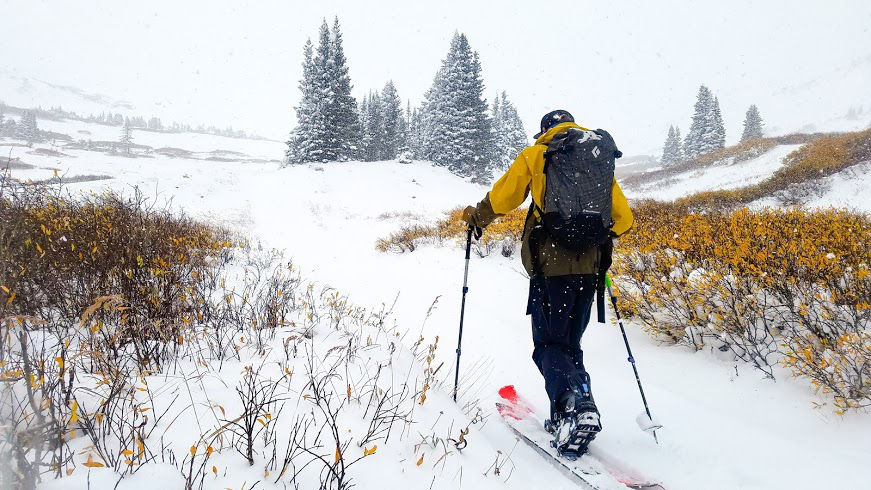We've seen our first couple of snow dustings in the high country already. Some areas in the West have had inches and even feet on the ground. A lot of us are itching to ride but it's important to remember this time of year can be dangerous in the backcountry. Weston Guide Ambassador Justin Ibarra explains why and how these early season snow storms can wreak havoc on our winter snowpack.
Here in Colorado, we have what you call a traditional “Continental Snowpack.”
Cold + Dry + Shallow
When we start to receive these early season snow storms they are typically followed by long, cold, dry spells before the next snow storm cycle comes through. Under this scenario, if the snow doesn’t melt, we will start to see the snow crystals break down into what we call facets, or sugar snow. This sugary, un-bonded snow will then continue to grow into an advanced stage of facets called Depth Hoar.
Depth Hoars are bad news bears. Why?
When we do then start to get into winter and receive accumulating amounts of snow, it will all be resting on those sugary facets, causing a weak layer at the bottom of the snowpack.
As you can imagine, this could cause an avalanche to encompass the entire snowpack.
Perfect example is last season’s historic avalanche cycles, a big player being the early season snow that we received back then became the seasons sleeping dragon.

So why do these lulls between storms cause the snow to facet?
One of the main reasons is due to what is called a Large Temperature Gradient, or a big change in the snow temperature over distance within the snowpack.
How cold is the air, how warm is the ground, and how deep is the snowpack?
When you have a shallow snowpack with colder fall air temperatures in Colorado combined with a warm Earth, you get a big change in the snow temperature within the shallow snowpack causing a Large Temperature Gradient.
In a perfect world whenever it starts to snow, we want the floodgates to just open up lending to a deeper snowpack and more distance for the snow temperature to chance producing a Small Temperature Gradient. Mother nature likes gradual change and not drastic.

Another big player that we typically see with these early season storms, is what melts and what doesn’t between the lulls.
Due to the fall equinox the sun will start to stay more South in the sky. This will usually then cause the Southerly aspects to almost completely melt out if long enough time between storms. Along with that most SW-W aspects will melt and depending on the temperatures, radiation, and again the amount of time between the storms SE-E will typically see a good amount of melting as well. Now the North side of the compass rose will stay cold and won’t see as much sun. This is a huge player in why Northerly aspects tend to be more dangerous here.

We basically just want to see one of two scenarios to play out.
1.) We don’t start to get snow until November and then the floodgates open!
2.) We get some early season snow but not a significant amount and it gets the chance to all melt away.
We could also add a hopeful third scenario... it starts snowing early season and it just doesn’t stop!
IN THE MEANTIME...
Fall is the perfect time to start going through your gear and making sure you fix your broken binding from last season, wax up the fleet, start brushing up on your avalanche skills again by reading books and blogs, get out and exercise, do some climbing or biking or hiking, get out and enjoy the colors, watch some ski porn, be patient, and stay STOKED for the season ahead because it will be here before we know it!
 Follow @justinibarra for more pow slayin' greatness.
Follow @justinibarra for more pow slayin' greatness.


4 comments
Quality information! Great reminders heading into the season!
Very interesting read! Thanks for the post.
Your picture on the depth hoar later looks exactly like the Big Cottonwood canyon pack today!
Great post! A lot of take home here. Thanks for lending your knowledge! Look forward to a deep year!